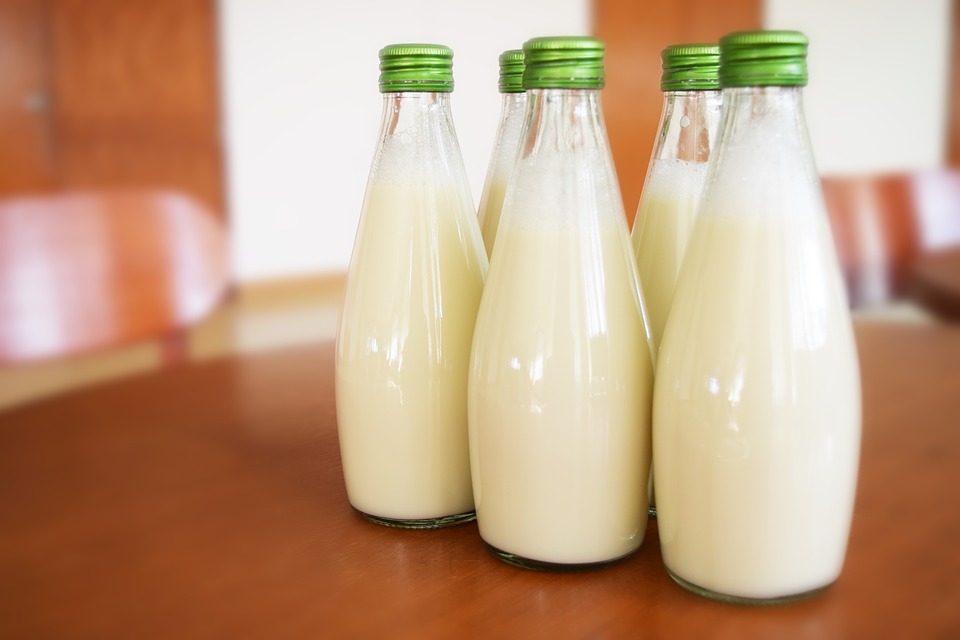
Milk Options for Your Child
It used to be that getting your child to drink milk every day was a “no brainer” in terms of what we believed were the long-term health benefits. Conventional wisdom maintained that every growing child needed calcium to build strong bones and teeth, and so parents worked hard to include multiple glasses of milk in their child’s daily diet. Those children were served primarily whole cow’s milk, of course, because that was what was available.
In the last few years, our milk choices have expanded exponentially. We now want more overall choices in our diets and are more concerned and knowledgeable about what is good for us. Many parents are also aware that dairy allergies are on the rise in America, and the conventional wisdom regarding the positive attributes of milk products is being challenged by major studies. In fact, researchers who once maintained that dairy milk was the healthiest food in the world are even exploring the possible association between dairy milk and several types of cancer.
The days when “milk was milk” appear to be over. Now there is a bewildering array of choices that confront parents in the grocery store. Let’s just start with the recent variations in cow’s milk available to any shopper. A parent can now buy skim (1% or 2%), full fat, homogenized, organic, calcium-enriched and even lactose free milk from dairy cows. Regardless of your choice, remember that cow’s milk isn’t digested well by babies under 12 months, and it lacks essential nutrients supplied by breast milk and formula. So hold off on introducing it until your baby’s at least a year old.
Milk Choices
But there are also many other milk choices now. One can buy milk from goats or sheep or drink milk made from almonds, rice, coconut, soy, hemp or flax. There is milk made from oats, cashews and even peas. And, if you add various flavorings or fortified elements to the mix, there are even more choices. It is confusing, to say the least. Here’s a summary of some of the most common ones available and some of the pros and cons of each to help you make sense of all the choices to be made in order to give your child the calcium and Vitamin D he or she needs.
Cow’s Milk
Cow’s milk (our dietary standby) is routinely pasteurized to kill potentially harmful bacteria. That milk will likely then be homogenized, a process in which the fat particles are mechanically broken down so they don’t separate, or it may be available non-homogenized, which results in an old-fashioned layer of rich cream on top.
If cow’s milk remains your dairy drink of choice, it is now generally recommended that you choose whole milk rather than reduced fat options as the research is mixed as to the perceived benefits of low-fat milk unless children are overweight. Natural fats have been proven to be healthy and actually help to curb appetite so whole milk is a healthy option. Try to buy organic milk that comes from grass-fed cows who have not been fed synthetic hormones to increase their milk production or antibiotics to fight the diseases that come from being fed corn while standing around in feed lots. There is a direct connection between what a cow is fed and the quality of the milk produced.
Other Sources of Dairy-Based Milk
Some parents may choose to have their child drink sheep or goat’s milk as an alternative form of dairy. Because of the different protein and fat structures in goat or sheep’s milk, some people can tolerate them better than milk from cows. One drawback, however, may be the taste – these alternatives are stronger flavored than cow’s milk so your child may not like the taste. These milks are also generally more expensive and less easily found, especially when eating out, so those are also considerations.
If your child experiences symptoms such as loose stools, stomach cramping and gas, especially after eating foods containing dairy products, he or she may have problems digesting lactose, the main sugar in milk and milk products. If a doctor has found your child to be lactose intolerant, then you need to find a dairy milk alternative. Since lactose is present in ALL animal-sourced milks, sheep or goat’s milk is not an option.
Plant-Based Milk
One healthy alternative is to serve your child soy milk, a highly-nutritional beverage made from an extraction of soybeans, water, sweetener (usually), oil, thickeners and some added vitamins and minerals. One controversy associated with soy, however, is that it contains phytoestrogens, plant-based estrogens that mimic the female sex hormone estrogen. Research has been mixed as to the potential risks or benefits of soymilk due to the presence of these estrogens. Soymilk is also relatively low in protein and most of its nutrients come by way of fortifying additives. So, if you go soy, look for non-GMO varieties and add additional protein elsewhere in your child’s diet.
Serving your child milk that comes from almond or rice can also provide a nutritional option. Almond milk – or other “nut” milks like those made with macadamias or cashews – has a light nutty flavor as a result of mixing roasted blended nuts with water so children usually like it. Rice milk is the blandest in flavor of all the milks, which is to some people’s preference. Using it in a smoothie makes it an instant favorite.
Rice milk, made from one of the world’s most common and frequently cultivated grains, is typically found at a cheaper price point than other dairy-free milks. Naturally low in protein, however, both almond and rice milk typically must have other nutrients such as calcium and vitamin D added. Coconut milk presents the same dilemma. In general, these plant-based milks are low in protein and calcium and have to be fortified in order for your child to get the nutrients he/she needs. And, as when you rely on soymilk, it is a good idea to add additional protein elsewhere in your child’s diet.
Hemp milk is a lesser-known option. Its rich Omega-3 and 6 essential fatty acids, calcium, magnesium and phosphorous, its low allergen risk, and its taste and texture make it an appealing alternative to dairy. Hemp milk is made by grinding and soaking hemp seeds in water. It has less protein than cow’s milk and can be hard to find as well as expensive. There is none of the active ingredient found in marijuana leaves, by the way.
Flax milk is rich in a group of Omega-3 fatty acids which have been consistently shown in studies to help offset the effects of inflammation on the body. Flax milk has just as much calcium in it as regular milk, making it a sensible option for people who wish to maintain healthy, adequate levels of calcium. And best of all, it is actually quite creamy and delicious and blends well with smoothies.
Milk is Essential, No Matter Its Form
Whatever your choices for your child, milk is still essential. Even though recent research has produced mixed results, there is still widespread agreement about the importance of some form of milk in every child’s diet. Strong bones are the results of genetics, physical activity and calcium. Since milk is the number one source of calcium, it is essential for your child. And almost all types of milk – whether dairy-based or plant-based- are fortified with other essential nutrients, making milk a mainstay of a healthy diet for your child.




